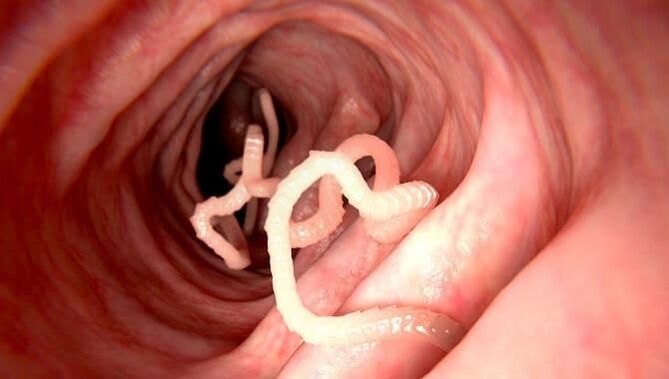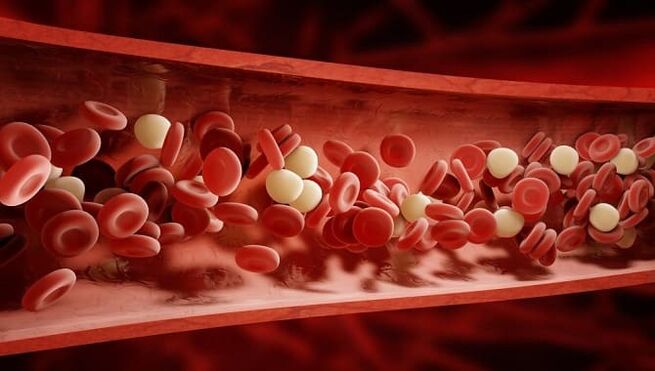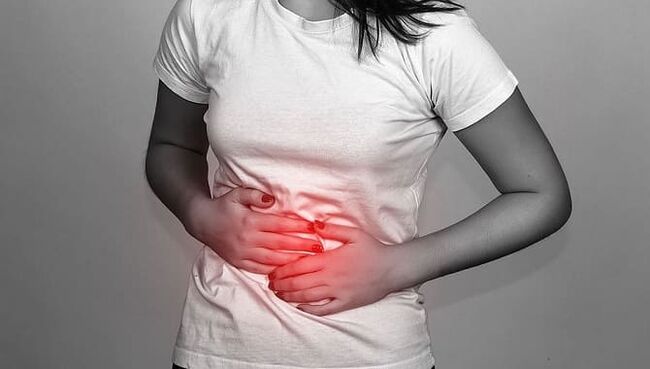Symptoms of worms in humans are not always noticed in time. Worm infections often have symptoms similar to other illnesses, such as allergies or indigestion. Parasitic worms in many different parts of the human body. Infected people may be treated for liver failure, chronic colds, or skin diseases without knowing the real cause of their poor health.
What are helminths?
Human worms are parasitic worms that can vary in size. They can enter the human body through the mouth, nasal passages, eyes, urethra or anus. Normally, the parasite lives in the intestines, attaching to the intestinal wall with special suckers, tentacles or teeth. The parasite can live in the tissues of the lungs and brain, on the mucous membranes of the respiratory tract, in the muscles, liver and gallbladder.

Worms feed on substances that enter the bloodstream from the intestines, red blood cells and tissue fluids.
Classification of helminths: types of worms in humans
Different types of helminths can parasitize the human body. Medical helminthology divides them into groups taking into account the characteristics of body shape:
- Round (nematode)- has an overall shape in the form of a lemon, thread, barrel or spindle. The head and tail of the nematode are slightly pointed. The oral apparatus is characterized as three-layered. The parasite moves freely in soil, fresh water and sea water. The human body contains pinworms (which cause intestinal worm disease), roundworms, hookworms and trichinella, which are considered intestinal parasites. Guinea worms - these roundworms spread through the tissue under the skin.
- Cestode. This includes the following parasites: bovine, swine, dwarf tapeworm, broad tapeworm. Their body resembles a finely segmented ribbon, its length can reach 10 meters or more. The anterior part of the parasitic worm is equipped with suction cups and hooks to attach it to the intestinal wall. Echinococci have a complex fixation system - 4 suction cups surrounded by two rows of hooks.
- trematodes (trematodes)— this type of worm is characterized by a specific habitat in the body: gallbladder, bile duct. Representatives of the trematode class are Siberian flukes (4-13 mm), trematodes (3-7 cm long).

The vital activity of helminths interferes with the normal functioning of the human body. Parasites poison the blood with toxins, causing people to experience dizziness, itchy skin, cough and poor sleep at night.
How do you get helminths?
Everyone should know why worms appear in humans and where they live in the body:
- Nematodes and flatworm tapeworms enter the body through dirty hands, eating unwashed vegetables, and drinking dirty water. Habitat: intestines.
- Trichinella, beef tapeworm, pork tapeworm - infection occurs when eating poorly processed meat (beef, pork). Location: intestine.
- Opisthorchis, broad tapeworm (class trematode or tapeworm). A person can become infected by eating raw, unsalted, or undercooked fish. In fish, parasitic larvae live in the fat and muscle layers. In humans, they settle in the liver and gallbladder.
- Echinococci, Siberian flukes, and liver flukes are transmitted through contact with infected dogs; Less commonly, cats are the source of infection. Helminths can parasitize the human liver, lungs, kidneys and heart. They develop inside Echinococcal cysts.
What do worms look like in human feces?
A person can see dead roundworms in the stool 3-4 days after taking anthelmintic medication. The length of these parasites living in the human body can reach 40 cm, the edges are sharp, and the body is white.
Pinworms usually leave the body a few hours after drinking milk with garlic or too salty or spicy food. Small white worms (up to 12 mm long) with sharp edges are clearly visible in the stool and around the anus.
Large flatworms or tapeworms are almost completely invisible (3 to 10 m long). After baiting, the worms leave the body in rotting pieces.
Signs indicating the presence of worms in humans
When infected with helminths, symptoms in adults and children are often similar to manifestations of other diseases. This is due to the location (respiratory tract, liver, bile) and life process of the worm.
During the acute phase
It is believed that the acute phase is asymptomatic. But in most cases, the first signs of worms are mild and the patient will ignore the parasitic disease. Less commonly, in infected people, signs of helminth infection in the body occur with fever, nausea and vomiting. The person feels weak and loses appetite.
In the chronic stage
Symptoms of chronic helminthiasis depend on the type of worms, their quantity, and their habitat.
Intestinal helminths
Symptoms of worms in adults in the intestines:
- digestive impairment;
- pressing pain in the navel area;
- bowel dysfunction;
- lack of appetite;
- losing weight;
- pale skin;
- bruises under the eyes;
- anal itching.

Against the background of diseases of the gastrointestinal tract, intestinal obstruction may develop. The pathological condition is manifested by paroxysmal pain in the abdomen, nausea, vomiting accompanied by the smell of stool.
Extraintestinal helminths
The main signs of helminth infection in the liver, gallstones and lungs:
- constant fatigue;
- neurasthenia;
- paroxysmal pain in the epigastric area;
- reduced performance;
- foul-smelling, fatty stools (steatorrhea);
- hives, itchy skin;
- chest pain;
- chronic dry cough;
- change skin color.
Extraintestinal parasites (giardia, opisthorchis, fasciola) can not only cause headaches or skin diseases but also cause depression. Usually, the pathological condition occurs if skin allergy symptoms do not disappear for a long time (itching, dry skin, rash) or reappear after treatment.
How to detect worms: diagnose helminth infections
To diagnose helminths, people collect feces on worm eggs. But analysis does not always give positive results when parasites are present. First, not all worms are identified this way. Second, the time of sending feces for analysis may not coincide with the time of parasite reproduction. Repeat testing for worm eggs is performed after 2-3 days. If the results indicating the presence of symptoms are negative, the following testing methods may be indicated:
- Blood analysis- increased eosinophil levels and low hemoglobin indicate worm infection.
- Duodenal sounds- Helps identify opisthorchiasis, giardiasis and other extraintestinal worms in humans by examining secretions from the duodenum.
- Ultrasound of the abdominal cavity and other parts of the human body— the gastrointestinal tract, liver, gallbladder, ducts, pancreas, muscles, brain, lungs are examined for the presence of pathological changes characteristic of worm life (seals, cysts, button, blockage).
- Chest X-ray- Proceed if lung parasites are suspected (detect roundworms, echinococci, tapeworm larvae).
- CT scan- to detect worms in the human brain, eyes and lungs.
- Capsule endoscopy- to identify ice parasites.
- ELISA- detects antibodies in the blood to most known parasites.
To assess the severity of body damage caused by worms, an immunological study is indicated. It helps identify weaknesses in the human immune system. Then complex therapy for the pathological condition is prescribed.
How to kill worms quickly and effectively
It is better to learn how to remove helminths from the human body when making an appointment with a parasitologist. Treating worms without a doctor's advice can lead to toxicity and liver dysfunction.
Dietary and hygiene characteristics
Treatment of helminths in adults and children should be accompanied by a diet that quickly eliminates worms and cleanses the body of toxins. It is necessary to exclude from the menu products that contribute to the vital activity of parasites or cause poisoning of the body:
- meat, lard;
- all kinds of sweets;
- Fresh milk;
- barbecue;
- wheat porridge, pasta;
- coffee, alcohol.

The daily diet should include fresh carrot salad, fermented milk products containing probiotics, eggs, freshly prepared vegetable juices, potato dishes, vegetables and mushrooms. The duration of the diet during worm treatment is determined by the doctor.
Hygiene procedures for helminth infections include frequent and thorough hand washing with soap. The procedure must be carried out before eating, after going to the toilet and when going out. Bed linen is changed 2-3 times a week. Be sure to iron after washing. After bathing, take a clean towel each time you bathe.
Medicine
Treatment of worms in adults and children is carried out with the following drugs:
- Broad-spectrum anthelmintic drug of the benzimidazole type - effective against roundworms and trematodes. Contraindicated in children under 2 years of age, use caution when prescribing to pregnant and lactating women. Dosage and frequency of administration depends on the type of worm. For roundworms and mixed infections, prescribe 1 tablet. 2 times a day for three days. Enterobosis is treated for three consecutive days, taking 1 tablet per day. The course is repeated after 21 days. Echinococci in adults are eliminated by increasing the dose of the drug: the first 3 days - 500 mg in the morning and evening, the next three days - 500 mg three times a day until the parasites are completely cured. The duration of treatment for echinococcosis is determined by the doctor (from 4 to 6 weeks).
- A broad-spectrum anthelmintic drug of the pyrazinisoquinoline group. Contraindicated for children under 4 years of age and pregnant women (first trimester). Effective against muscle/tissue worms. Urinary schistosomiasis (worms that live in blood vessels near the bladder), intestines and abdomen are treated with a single dose (40 mg/10 kg). In severe forms of parasitic angiopathy, take the drug 3 times a day (every 6 hours) at a dose of 20-25 mg/10 kg.
- A broad-spectrum drug belonging to the benzimidazole group. Do not prescribe for children under 2 years old, pregnant or breastfeeding women. Adults are prescribed 400 mg/day once, children at the rate of 60 mg/10 kg for intestinal helminths. For parasites in the brain, adults are prescribed 800 mg/day, children - 15 mg/kg, the course of treatment is 8-30 days.
Antihelminthics are very toxic. They are not prescribed for people with liver failure, ulcerative colitis or Crohn's disease.
Traditional method
How to treat worms with home remedies:
- Grind flax seeds (1 tablespoon). Pour the powder into 0. 5 liters of cold water. Bring the mixture to a boil, cook over low heat, covered for 20 minutes. Take 100 ml in the morning and evening on an empty stomach for 10 consecutive days. This formula helps fight most parasites that can live in the human body - pinworms, tapeworms, Giardia.
- Grind 300 g of dry pumpkin seeds but do not fry them. Add enough warm boiled water to the flour to make a thick paste. Add a large spoon of honey. Eat the entire mixture on an empty stomach. After 4 hours, take a laxative. The formula is effective in treating intestinal worms in humans.

Pumpkin seeds are an allergic product, so itchy skin may occur during worm treatment. An anti-allergy pill will help to cope with it.
Which parasites can only be removed surgically?
Surgical treatment of helminthiasis requires the following conditions:
- Intestinal obstruction - a pathological condition caused by roundworms, tapeworms, tapeworms and other worms.
- Perforation of the intestinal wall - the tapeworm makes a hole and enters the human abdominal cavity.
- Parasitic cholecystitis with pancreatic necrosis followed by obstruction of the bile duct by band parasites.
Usually, surgery is used for echinococcosis. Parasitic cysts in infected humans in the lungs, kidneys, liver, spleen are removed by endoscopic or laparoscopic surgery.
How dangerous is helminth infection for the body?
If not treated, the disease will turn into a chronic form. The most dangerous thing that can happen to the body when the disease is severe is the destruction of tissues of internal organs, causing suffocation and leading to blindness.
How to protect yourself from infection
Preventing helminth infections in the body requires a person to:
- Carefully follow the rules of personal hygiene.
- Timely treatment of parasites in pets.
- Heat treat fish for 60 minutes, meat for 2-3 hours.
In people with strong immunity, worm eggs are neutralized, so the immune system must constantly be strengthened. To do this, it is enough to lead a healthy lifestyle and periodically supplement vitamin and mineral complexes.























